Today is International Women’s Day. In this post we look at why it’s an important day to celebrate, we share some statistics about women in UX, and we feature our UX community’s favourite role models.
I can’t remember where I first heard it, but someone once said “Show me how you spend your time, and I’ll show you what you value.”
Accepting the challenge, I have an ongoing personal project to create a meta-calendar that proactively and reactively helps me chart the ebbs and flows of my life, helping me pay attention to stuff I’d otherwise forget or consider too difficult. It tracks seasons both literal and abstract, reminds me about things to be thankful or sorry about, helps me stay in touch with useful traditions and long term goals, to celebrate food and friends and family, to mark the passing of time in a conscious way. Pretty basic stuff, but calendars can be a profound way to remain mindful of when and who we are, and what things we value.
Today’s date in my calendar, March 8, is designated International Women’s Day.
While it should perhaps be Women’s Day once in every two days, on this day in particular we shine a spotlight on the bigger picture.
Why is International Women’s Day even a thing?
It’s been celebrated for the past 107 years, but has particular significance in light of the United Nations’ Sustainable Development Goals that were agreed and adopted by the global community in September last year.
That sounds very grand and lofty, but in reality International Women’s Day is a chance for all of us—you, me, civil society, the private sector, and governments—to actually make some important decisions about things that end up affecting real lives. One of these important goals is achieving gender equality and empowering women and girls.
Sure, but that seems to be about global stuff… How is this actually relevant to UX?
It’s important for a whole bunch of interrelated reasons; gender equality is not only a fundamental human right, but a necessary foundation for a peaceful, prosperous and sustainable world.
Let’s get some perspective:
47% of the UX Mastery community are women, which is great when compared to the female population of countries in the Arabian peninsula (as low as 26%), but it still doesn’t quite match the global ratio of roughly 50:50.
In the last six years, the ratio of women to men in UX and related fields has equalised by around 7% (based on statistical data and anecdotal observations), but there is a lot more to it than simply aiming for an equal gender split.
Jeff Sauro’s Salary Survey in 2014 found that within the professional field of user experience, men can be paid up to USD$10,000 more, on average, than women, and that there is a greater statistical impact when gender is coupled with age and years of experience.
“This three-way interaction shows women are paid slightly more than men in the 18-25 age cohort, but have less experience, and consequently lower salaries, as they get into their careers after their late 20’s.” he says.
In Australia, the average full-time weekly wage for women workers is 18.2% less than for men, and it’s been stuck between 15-18% for the last two decades. That means Australian women would have to work an extra 66 days per year to earn the same salary as men—for doing the same work. Correspondingly, in 2009-2010, average superannuation payouts for Australian women were only just over half (57%) those of men.
A significant part of the problem is related to taking time off work to parent children, can be traced to women not demanding equal pay (and others not giving it to them), and gender bias in workplace language—especially where it affects hiring or promotion of staff. To begin addressing some of these issues, we need to know our positive role models and leading voices. But who are they?
Know your UX role models, they may not be that far away…
Our female UX heroes need to come to mind in conversations as easily and as commonly as the male ones do. It’s not that women haven’t achieved, or there weren’t as many contributing, it’s that they aren’t properly or widely recognised for the stuff they did do.
Perhaps the benefit of having role models that you really know, like a sister or a mum, is that you get to know them at a level that helps you see bits of yourself in them. They’re not just inspiring and practical, they’re mentors who may know you better than you know yourself.
- Grandparents: Jessica Enders, herself a globally recognised expert in form design, looks up to her late grandmother.
“She survived the Great Depression and two world wars, brought up two children on her own, never drove a car but always walked or caught public transport, sewed all her own clothes, could master any cryptic crossword, and loved her husband like no-one else could.”
Jessica is also inspired by women that nurture their children, help them feel loved, and raise them with solid values, “Because parenting is a thankless but also incredibly important task.” - Sisters and Mothers: Natalie Eustace, a UX designer with a Master’s degree in Human Interface Technology, also recognises the value of family role models:
“I feel really corny saying this, but my sister and my mum? My mother from her empathy and always trying to see all points of view, and my sister because she’s been through so much. She’s a designer, among many other talents: she doesn’t let others opinions put her down and continues to do what she loves. The stuff she does is amazing.” - Nerd friends: Fox Woods is strengthened by her first female nerd friends Michelle and Priya.
“We’ve been to SXSW, Web Directions, Webstock, UX Book Club, and so many other nerd meetups… We’ve discussed code, encouraged each other, inspired each other.” - Workplace leaders: Rebecca Jackson, a self-confessed nerd (and one of our favourite UX sketchers), attributes the seeds of her UX career to her boss.
“If I take it back to the beginning it was the boss which introduced me to the world of UX that is probably the most influential. Previously I had been undertaking UX activities but I didn’t realise there was a whole discipline and world behind it. When I started working with, and eventually for Erin, she introduced me to UX and UX Australia.”
Erin also continued to foster Rebecca’s appreciation of UX, “which is not something that those of us who work outside of agencies and UX teams always get in the workplace.”
They’re working right alongside you
Rebecca describes the scene brilliantly: “I am lucky that we are in a community where there are many fabulous women who I can continually seek inspiration from.”
Jessica finds inspiration from Donna Spencer and Maxine Sherrin, two people separately at the heart of Australia’s two best web conferences: UX Australia and Web Directions.
“Both these women have a strong sense of who they are and what they want to do, and they just go out and do it. Their success demonstrates their tenacity and dedication”, explains Jessica. “I also love how people like Alice Bartlett from the UK Government Digital Service and Sara Wachter-Boettcher are fighting to get us to see the real people faced with our designs.”
New Zealand’s premier web event, the world renowned Webstock, was co-founded by Natasha Lampard, self-described ‘air commodore’ of event registration software developer Lil Regie and ‘squadron leader’ of Extraordinary Tales of Strength and Daring, a series of get-togethers with a focus on living and learning, creativity, inspiration and connection.

Donna Spencer, Information Architect, Author and conference organiser of UX Australia.
LinkedIn | @maadonna | www.uxaustralia.com.au

Maxine Sherrin, Co-founder and Director of Web Directions
LinkedIn | @maxine | www.webdirections.org

Alice Bartlett, front-end developer and presenter of Bin Your Select talk, jQuery UK 2015
LinkedIn | @alicebartlett | alicebartlett.co.uk

Sara Wachter-Boettcher, content strategy consultant, author and editor. Personal Histories post.
LinkedIn | @sara_ann_marie | www.sarawb.com

Natasha Lampard, co-founder of Webstock, and of Lil Regie.
LinkedIn | @tashmahal | webstock.org.nz | www.extraordinarytales.org.nz
Dean, based in Amsterdam, has been working in UX and accessibility for six years, and wanted to add names to the hat from a male perspective.
“So, so many,” he says. “Susan Weinschenk—if you haven’t read 100 Things Every Designer Needs to Know About People then you should. If you have read it, you’ll know why her name is here.” He goes on: “Content strategy and accessibility especially have so many amazing thought leaders—like Geri Coady and Karen McGrane.”
Our community manager, Hawk, saw Karen McGrane speak at the Webstock conference last month, and seconded Dean’s nomination. “She’s definitely inspiring.”

Susan Weinschenk, ‘the brain lady’ and behavioural scientist.
LinkedIn | @thebrainlady | www.theteamw.com

Geri Coady, colour-obsessed designer, illustrator and author. Accessible websites do not have to be boring.
@hellogeri | www.hellogeri.com

Karen McGrane, content strategist, prolific blogger and writer, and founder of Bond Art + Science.
LinkedIn | @karenmcgrane | karenmcgrane.com
Kayla Heffernan is a UX designer, advocate, design detective and presenter. She counts herself fortunate to have great role models at work:
“We have some awesome women at SEEK who are passionate about equality day-to-day and have done some great things during our Hackathons. Sarah Redmond and Anna Kelk spearheaded Camp SEEK out of a hackathon which ran a week long program for high school girls interested in Tech. Emma Haslip started a hack to check for gendered words in job ads to encourage more female applicants. None of these ladies are specifically UX, but are still ladies in Tech doing awesome things.”

Sarah Redmond, Learning & Development Specialist
LinkedIn | @RedSageDigital

Anna Kelk, Product Manager
LinkedIn | @annakelk

Emma Haslip, data nerd
@emmahaslip
Kayla also appreciates that there are so many people on Twitter promoting gender equality in UX.
“Too many to name,” she says, “but a few that stand out are Jennifer Aldrich, Jessica Ivins and Jen Simmons.”

Jennifer Aldrich, UX & Content Startegist, InVision
LinkedIn | @jma245 | userexperiencerocks.com

Jessica Ivins, faculty at Center Centre
LinkedIn | @jessicaivins

Jen Simmons, the Web Ahead podcast
LinkedIn | @jensimmons | thewebahead.net
There are many, many accomplished people driving the UX profession. Here are three more:

Elizabeth Churchill, Director of UX at Google, former Director of HCI at eBay
LinkedIn | @xeeliz
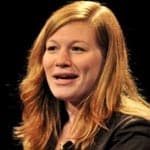
Whitney Hess, writer, speaker, empathy coach
LinkedIn | @whitneyhess | whitneyhess.com

Gayna Williams, leadership & career coach
LinkedIn | @SheCanICan
Inspiration can come from anywhere, and often does
Women who face and defeat adversity, frequently needing to respond to pretty hostile environments, are seen as the most inspiring. Fox Woods is a UX consultant and former co-runner of Girls Club xo.
“Every time I see a woman being a leader in their field, it’s really inspiring to me.”
Jessica Enders agrees, and says that “Women working in gaming or blogging inspire me, because they get so hammered by misogynistic abuse yet keep going. Women who stand up for themselves in situations of family violence inspire me, because that is one of the most difficult things a person can ever do.”
Ash shares that the women who inspire her the most in UX are mostly those close to her—friends and colleagues past and present:
“The woman who has had the biggest inspirational impact on my UX career to date would have to be my first UX manager and now friend. Her name is Ange and she empowers me and shows me that I can do absolutely anything in this world.” But she also looks to prominent figures in science, such as Marie Curie. “She was passionate, curious and driven—nothing got in her way. She had two kids, her husband died, and she got caught up in a crazy scandal, but it didn’t stop her.”
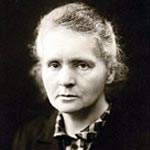
Marie Curie, developer of the theory of radioactivity (a term she coined) forcing a reconsideration of the foundations of physics, discoverer of two elements (polonium and radium), the first female to be awarded a Nobel Prize and first person and only woman to win twice (physics and chemistry). Wikipedia
From science to music, Ash also sees contemporary role models like Lady Gaga as a hero, too: “She’s incredibly talented and is constantly evolving and reinventing herself but she’s also quite empathetic. Underneath the crazy outfits is an actual person who gives a crap about making a difference, and I respect that.”

Lady Gaga, singer, songwriter, and actress known for her self-empowering messages.
@ladygaga | Wikipedia

Marrissa Mayer, Yahoo president and CEO
LinkedIn | @marissamayer

Sheryl Sandberg, Chief Operating Officer at Facebook
LinkedIn | @sherylsandberg

Lena Dunham, creator and star of the HBO series Girls.
LinkedIn | @lenadunham

Kristina Karlsson, founder of stationery and gifts retailer Kikki.K
www.kikki-k.com

Gretchen Rubin, author on habits and happiness
LinkedIn | @gretchenrubin

Garance Doré, blogger photographer, illustrator
LinkedIn | @garancedore
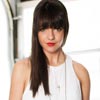
Jessica Walsh, designer, illustrator, art director
LinkedIn | @jessicawalsh

Lisa Messenger, Collective Magazine
LinkedIn | @LisaMessenger

Elsie Larson & Emma Chapman, A Beautiful Mess
LinkedIn | @abeautifulmess | www.abeautifulmess.com
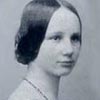
Ada Lovelace, mathematician and writer (1815-1852), developer of the first computer algorithm.
Wikipedia

Grace Hopper, computer scientist, US Navy Rear Admiral and inventor of the first compiler for a programming language.
Wikipedia

Ruth Ginsburg, Justice of the Supreme Court of the United States and advocate for women’s rights.
Wikpedia
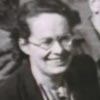
Joan Clarke, cryptanalyst and deputy head of Hut 8 at Bletchley Park, one of the very best practitioners working on the Enigma project during WWII along with many other women. Wikipedia

Jane Caro, mentor, social commentator, writer and lecturer with strong interests in education and women in business.
LinkedIn | @JaneCaro | janecaro.com.au
You, too, should be a role model
Natalie believes strongly in the importance of finding and following female role models, and suggests one of the problems is the lack of women in software development and its tertiary-level education:
“I don’t actually have very many female role models at all. Most of the work that I have done, or courses I have taken, have been majority male dominated, and therefore I tend to think about them more when I think role models.”
But Natalie has chosen to do something about that. “I’ve also been helping out with some school code club activities and I would have to say, looking at the younger girls and the kind of work that they are learning and doing to break the bonds of ‘I shouldn’t do tech because it is a boys world’, it is quite inspirational.”
By being a role model herself, Natalie hopes to short-circuit the problem. “The fact that they are the ones to start ignoring the divide and just do it because they enjoy it—and even go against their parents sometimes in terms of suggested subjects—they are taking a leap of faith in an awesome direction.”
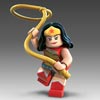
Wonder Woman deserves a mention. Why? Ashley explains: “Because I have a LEGO mini-figurine of her and she makes me smile.”
Giving time to things that are worthwhile is one of the most useful things we can do in a world where time is a precious commodity. International Women’s Day is a time to reflect on progress made, to call for change and to celebrate acts of courage and determination by ordinary women who have played an extraordinary role in the history of their communities as we aim to give gender inequality a firm expiration date.
Your challenge for the week is to take a few minutes to seek out the female voices around you (both prominent and emerging) and to engage with them, pick their brains, give them feedback and be inspired by them. Become the role model you wish you’d had yourself.
Join the conversation over in the community forums »
Watch out for International Men’s Day on November 19.

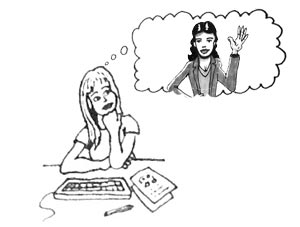


Thank you for writing this, especially the list of role models. I’ve followed a few on Twitter!
Hi Luke, and well done for highlighting some of the greats in our field of work.
I wrote an article recently about what I felt to be a gender split in UX.
While the stats of around 50-50 you’ve shared are a good reflection of my experience, it’s the distribution of the genders in the roles and specialisms within UX which interest me.
Perhaps some of the women you list here buck my trend nicely.
What do you think?
http://www.userexperience.co.nz/2015/12/the-ux-gender-spectrum/
Thank you for great article and role models list.
Great article and great women, all! Thank you UX Mastery for this celebration.